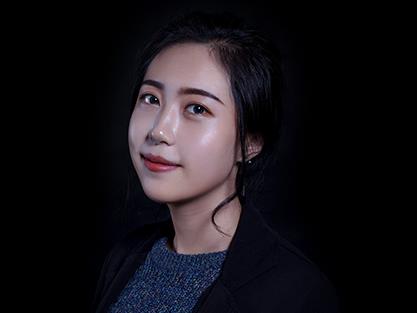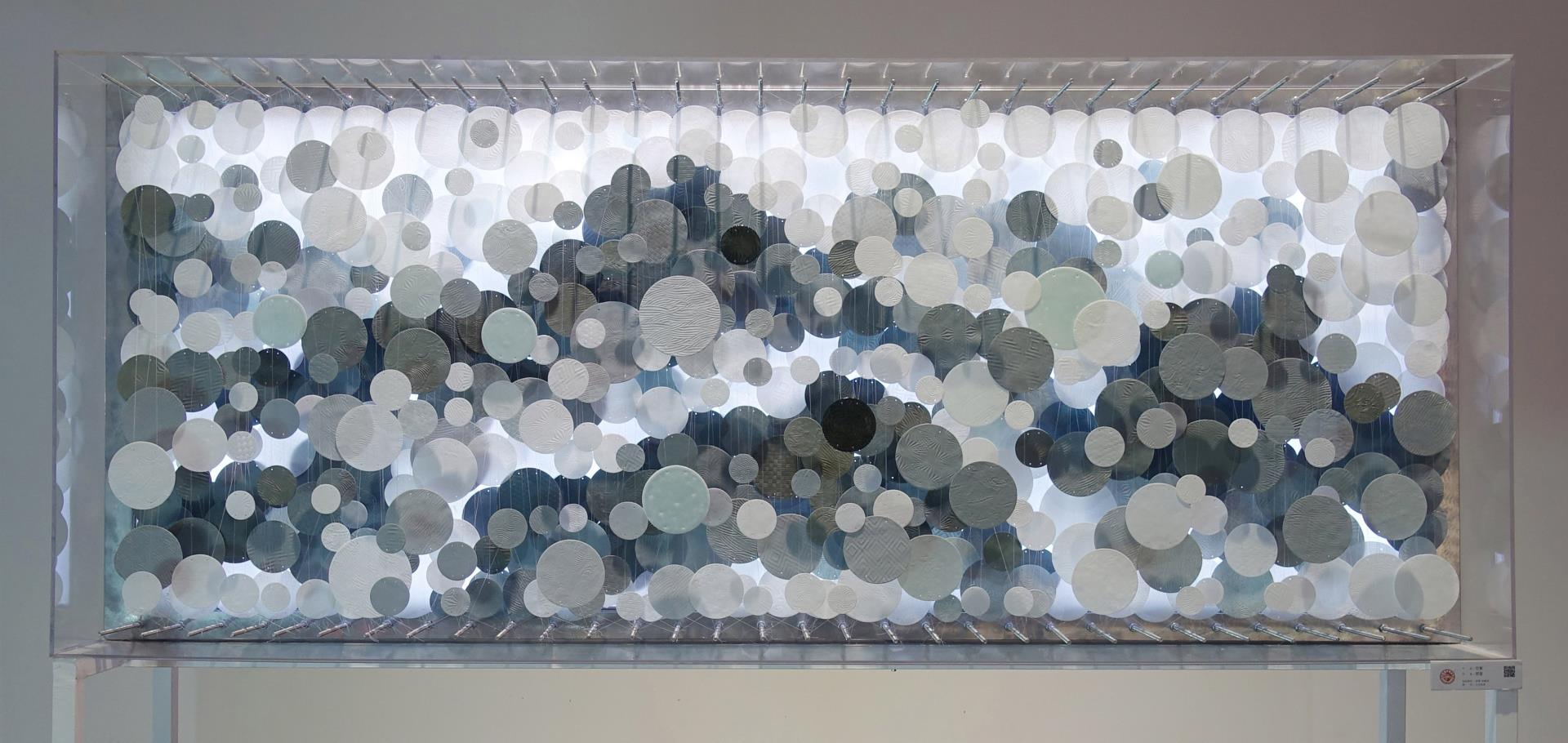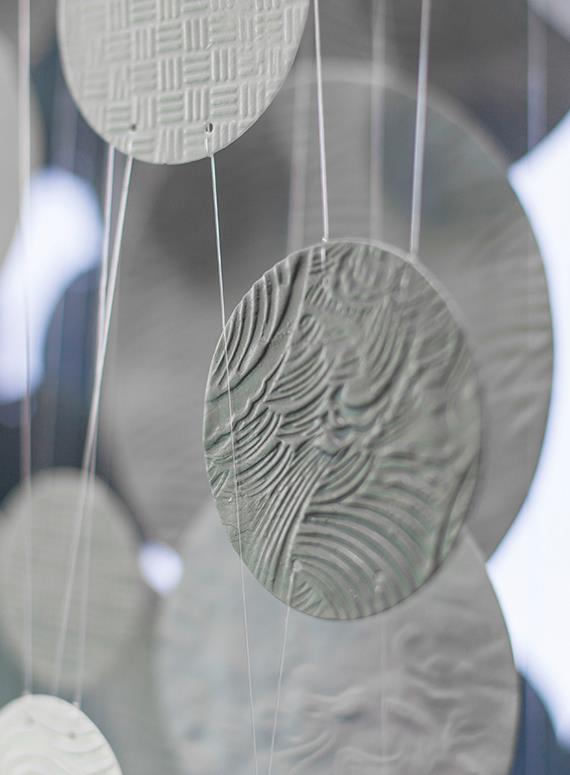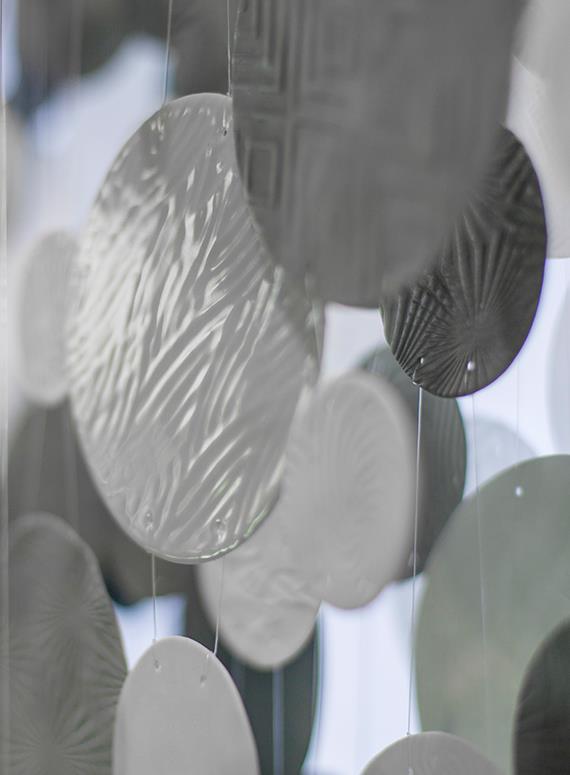
No Title
It was the graduation design during the author’s undergraduate study. After making plans and drafts in the early stage, the author finally decided to finish the work with ceramics, toners, fishing lines, metal light boxes and acrylic.
This work mainly used special white porcelain clay as the main material, adding coloring toner to the porcelain clay, and making the clay’s color different by adopting different proportions. To better display the transparency of porcelain clay, the author strived to make the ceramic chips very light and thin. Each ceramic piece was hand-shaped with a thickness between 0.2 and 0.5 mm. A relief process was also added to the ceramic chips in order to make them diversified. The ceramic chips were fired in Jingdezhen, and it required a very difficult process since they need to be very thin. In the early stage, the extremely thin ceramic chips were affected by the weather, and often broke even before they were fired. Therefore, the author made a lot of attempts to minimize the degree of damage. During firing, the qualified ceramic chips must be selected by the continuous tests in the kiln.
This work has two sides with nearly a total of 2,000 pieces. The holes left in the early stages of production were pierced into the fishing line, and then tied one by one according to the landscape picture drawn by myself. A light box is used in the middle of the work, and the light transmittance of the ceramic piece is better by the illumination of the light box, strengthening the spatial projective relation between the front and back of the ceramic pieces as well. There are pictures made by ceramic discs on both sides of the light box, totaling 12 layers with 6 in the front and 6 in the back.
The author hopes to show the unusualness of things that seem to be ordinary. It is intended to emphasize that we should not neglect the existence of every small matter around us, which is also the design concept that the work wants to present.
This work mainly used special white porcelain clay as the main material, adding coloring toner to the porcelain clay, and making the clay’s color different by adopting different proportions. To better display the transparency of porcelain clay, the author strived to make the ceramic chips very light and thin. Each ceramic piece was hand-shaped with a thickness between 0.2 and 0.5 mm. A relief process was also added to the ceramic chips in order to make them diversified. The ceramic chips were fired in Jingdezhen, and it required a very difficult process since they need to be very thin. In the early stage, the extremely thin ceramic chips were affected by the weather, and often broke even before they were fired. Therefore, the author made a lot of attempts to minimize the degree of damage. During firing, the qualified ceramic chips must be selected by the continuous tests in the kiln.
This work has two sides with nearly a total of 2,000 pieces. The holes left in the early stages of production were pierced into the fishing line, and then tied one by one according to the landscape picture drawn by myself. A light box is used in the middle of the work, and the light transmittance of the ceramic piece is better by the illumination of the light box, strengthening the spatial projective relation between the front and back of the ceramic pieces as well. There are pictures made by ceramic discs on both sides of the light box, totaling 12 layers with 6 in the front and 6 in the back.
The author hopes to show the unusualness of things that seem to be ordinary. It is intended to emphasize that we should not neglect the existence of every small matter around us, which is also the design concept that the work wants to present.
Year of Creation: 2018
Materials: Clay, porcelain, metal light, metal lighting box and fish wire etc.
Dimensions: 90*260*45cm





